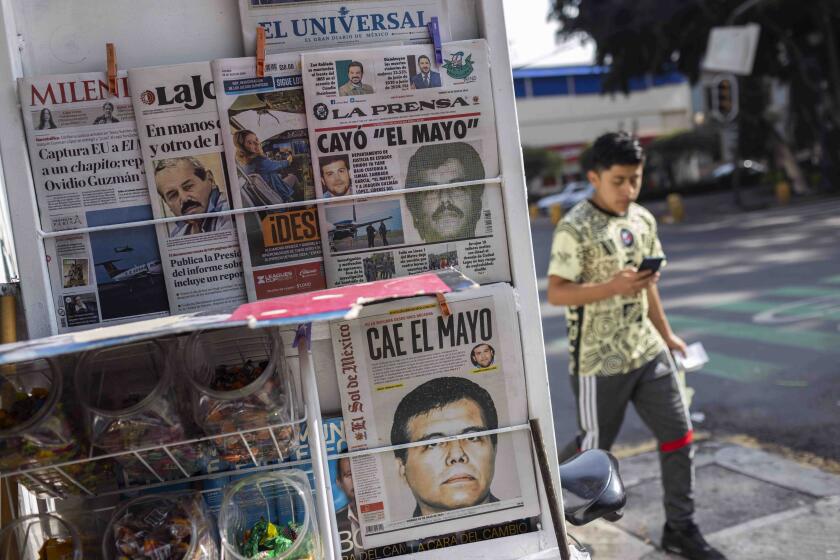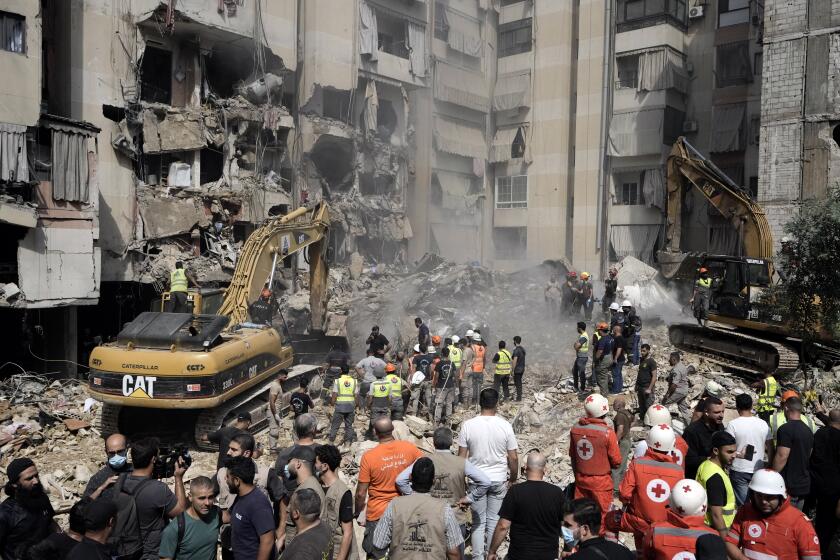An Alternative to Embalming for the Pontiff
When he heard that Pope John Paul II had died, Massimo Signoracci crossed himself, murmured a prayer and waited for a call that never came.
The Signoracci clan, a dynasty of morticians and embalmers whose roots go back to an old Roman cemetery on an island in the Tiber River, has ministered to the last three popes and hoped to be asked to tend to this one as well.
But for reasons that were unclear, no Vatican summons came. To the dismay of the spurned Signoraccis, a forensic medical specialist from a Rome university was called in to take measures to preserve the pope’s corpse for five days of public viewing and Friday’s elaborate funeral.
“I’m very saddened,” said Signoracci, a tousle-haired 47-year-old. “It was a tradition that we felt very much part of, being with the Holy Fathers at this time. It was a beautiful thing to us.”
Few events are more public, and more momentous, to church faithful than the death of a pope, particularly one as widely admired and well-traveled as this one.
Yet the papal afterlife has long been marked by intense Vatican secrecy, bitter professional rivalries and occasional calamity.
In centuries past, the corpses of some pontiffs were set upon by mobs or looted for relics. Until the beginning of the last century, the internal organs of popes were preserved in jars and interred separately from their bodies, but Pope Pius X, who considered the practice gruesome, put a halt to it before his own death in 1914.
Posthumous papal misfortune continued into modern times. In 1958, Pope Pius XII’s pre-death agony was photographed by an unscrupulous physician and the pictures splashed on the front pages of Italian newspapers.
The luckless Pius XII was not only tabloid fodder because of the clandestine photos; his body also decomposed significantly before burial. Accounts from the time describe his corpse turning “emerald green” and stolid Swiss Guards fainting from the smell.
When papal aides instructed that Pope Paul VI be only lightly embalmed upon his death in 1978, they failed to take Rome’s steamy summertime weather into account. After two days on public display in the August heat, the body began to putrefy.
John Paul’s corpse was not embalmed, Vatican spokesman Joaquin Navarro-Valls said this week, but did undergo treatment to preserve it during public viewing.
Vatican officials indicated that the procedure involved the injection of a formaldehyde-based fluid, which falls short of a full embalming process.
Dr. Giovanni Arcudi, the head of forensic medicine at Rome’s Tor Vergata University, confirmed that he had been summoned to the Vatican after the pope’s death Saturday night to oversee the body’s temporary preservation -- but said he had been sworn to secrecy about the details.
“All that was done by myself and my colleagues was carried out with the greatest possible respect for the remains of the Holy Father,” Arcudi said.
Officials say more than a million mourners have already filed past the body, which is laid out on a bier in St. Peter’s Basilica. Several pilgrims who braved the hours-long queue Wednesday said the pope’s features appeared waxy and sunken.
During the three days that the body has been on view, St. Peter’s has closed from 2 to 5 a.m. The Vatican has said the hiatus is for maintenance inside the basilica, but a prominent specialist said it was likely that a formaldehyde solution was re-injected during that time, and cosmetics applied to conceal what by now would be apparent signs of decay.
“Even with treatment, after this length of time, there would be the beginning of blackening of the skin, and ‘weeping’ of the eyes,” said Vincenzo Pascali, director of forensic medicine at Rome’s Catholic University.
The pope’s casket will be closed for the funeral, the Vatican has said.
The occasional need to exhume popes’ bodies has prompted some quiet debate over what constitutes an advisable degree of preservation.
In 2001, Pope John XXIII’s embalmed body was removed from its crypt beneath St. Peter’s Basilica and placed on permanent display in the basilica, a move prompted by his beatification, the initial step on the path to sainthood. “Good Pope John” had died 38 years earlier, but the body was described as remarkably well preserved, though it had to be fitted with a wax face mask made from a mold taken at the time of his death.
Atmospheric conditions in the underground Vatican grottoes, combined with the traditional method of papal burial in three caskets enclosing one another, are conducive to natural mummification, Pascali said.
“With even minimal preservation, you will see skin that is dry and leathery, but the degree of decomposition can be extremely low,” he said.
Dr. Gennaro Goglia, who was among those who prepared John XXIII’s body for burial in 1963, was pleased upon the exhumation to see how well his work had held up.
So was the Vatican, which awarded him a medal.
Now in his 80s, Goglia recalled with reverence his abrupt summons to the papal apartment, where he worked late into the night, attended by prayerful clerics. He saved for posterity the scalpel he used.
“I knew I must not make mistakes, because I felt I was dealing with the body of someone destined to become a saint,” Goglia said.
He believes the same is true of John Paul, who is already being discussed as a likely candidate for beatification.
Goglia said he believed the pope’s decision not to have his body embalmed was personal, even if his state of preservation might become an issue. John Paul also asked to be buried in the ground rather than in an aboveground crypt, the Vatican said.
“If it is his wish, even a pope has the right to be buried naked in the ground,” said Goglia. “Dust to dust.”
Times researcher Damian Salsarola contributed to this report.
More to Read
Sign up for Essential California
The most important California stories and recommendations in your inbox every morning.
You may occasionally receive promotional content from the Los Angeles Times.










